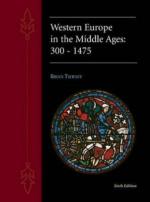|
This section contains 432 words (approx. 2 pages at 300 words per page) |

|
Choice of Language. What was spoken at home, in the field, street, and shop, and at most public gatherings was the language of medieval everyday life. It was the native language of a locality, known as its vernacular language. Until well after the first millennium, the common language of a medieval region had little or no expression in writing. The first and most widespread written language of Europe was its literary language, Latin. It was used throughout the Christian realm, especially for all official documents, particularly those of a religious nature. The use of spoken Latin in Church and in some government meetings and courts of law was an exception to the general use of the vernacular in verbal exchanges.
Literary Horizons. Over the course of the later Middle Ages, many vernaculars developed a written form and came to be used in...
|
This section contains 432 words (approx. 2 pages at 300 words per page) |

|




